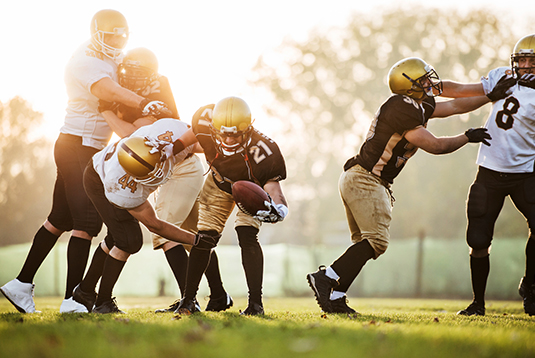
As football season approaches in Houston, excitement is building across high schools, colleges, and local leagues. But before athletes take the field, it’s important to remember that preseason is one of the highest-risk times for injury. Without the right preparation, players are more likely to suffer sprains, strains, and even more serious injuries that can sideline them for weeks or the whole season.
At CLS Health Sports Medicine, our goal is to keep athletes healthy and performing at their best. Here are four key steps to help football players get game-ready while reducing the risk of preseason injuries.
1. Build a Solid Conditioning Base
One of the biggest risk factors for preseason injury is poor conditioning. After a summer of lighter activity, athletes may jump straight into intense practices and scrimmages without giving their bodies time to adapt.
- Gradual Progression: Start ramping up training 3–4 weeks before practices begin. Begin with bodyweight exercises, running drills, and mobility training.
- Core & Stability Work: Strong core muscles protect the spine and help maintain balance during contact. Planks, side bridges, and stability ball drills are excellent choices.
- Agility & Speed Training: Quick lateral movements, cone drills, and sprint work prepare the body for football’s fast-paced demands.
2. Don’t Skip Warm-Ups and Cool-Downs
Skipping warm-ups is like revving a cold engine, it sets the stage for breakdowns.
- Dynamic Warm-Ups: High knees, butt kicks, lunges, and skips help increase blood flow and flexibility before activity.
- Cool-Down Routine: After practice, athletes should walk, stretch, and hydrate. This helps flush out lactic acid and reduces next-day soreness.
Even 10 minutes before and after practice can significantly reduce muscle strains and cramps.
3. Hydration and Heat Safety in Houston
Practicing in Houston’s late-summer heat poses an extra challenge. Dehydration and heat illness are serious risks, especially for younger athletes.
- Hydrate Early and Often: Don’t wait until you’re thirsty, drink water throughout the day. Sports drinks may be useful for longer practices to replace electrolytes.
- Watch for Warning Signs: Headaches, dizziness, confusion, or excessive fatigue may indicate heat exhaustion. Immediate cooling and medical attention may be necessary.
- Pre-Practice Fueling: Eating a balanced meal with protein and complex carbs helps athletes sustain energy during practice.
4. Prioritize Recovery and Rest
Football players sometimes believe “more is better,” but overtraining increases the risk of injury. Recovery is just as important as practice.
- Sleep: Aim for 8–10 hours of quality rest, especially for teen athletes.
- Active Recovery: Light activity like swimming, yoga, or cycling helps muscles recover without adding strain.
- Injury Reporting: Encourage athletes to speak up about pain early. Treating small problems prevents them from becoming season-ending injuries.
The preseason is a time to build strength, teamwork, and confidence, not to get sidelined by preventable injuries. By focusing on conditioning, warm-ups, hydration, and recovery, football players can reduce their risk and stay strong throughout the season.
At CLS Health Sports Medicine, Dr. Javier Rios M.D. and our team specialize in keeping athletes on the field with non-surgical orthopedic care. Whether you’re a high school athlete, weekend warrior, or parent concerned about injury prevention, we’re here to help you prepare for a safe and successful football season.











